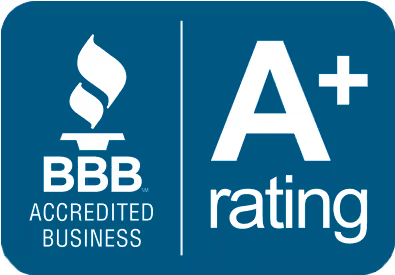Waterproofing a basement is one of the most important steps you can take to protect your home from water damage, mold, and structural issues. A basement that is not properly waterproofed can lead to serious problems, including foundation cracks, flooding, and unhealthy living conditions. With several waterproofing methods available, homeowners often wonder which is the best option. The answer depends on the specific needs of your basement, the source of the water intrusion, and your budget. In this article, we'll explore the most effective basement waterproofing methods, their advantages and disadvantages, and how to choose the right solution for your home.
Understanding Why Basements Leak
Before diving into the different waterproofing methods, it’s essential to understand why basements leak in the first place. Common causes of basement water issues include:
- Hydrostatic Pressure: Water in the soil surrounding your home exerts pressure on the foundation walls. Over time, this pressure can force water through cracks and porous areas in the foundation.
- Poor Drainage: Improper grading, clogged gutters, and downspouts that don’t direct water away from the foundation can cause water to accumulate around the basement walls.
- Cracks in the Foundation: Cracks in the foundation walls or floor can provide a direct path for water to enter the basement.
- Condensation: In humid climates, moisture in the air can condense on the cool basement walls, leading to dampness and mold growth.
- Leaking Windows and Doors: Basement windows and doors that are not properly sealed can allow water to seep in during heavy rain or melting snow.
Understanding the source of the water intrusion is crucial for choosing the best waterproofing method. A comprehensive inspection of your basement and foundation will help identify the root cause of the problem.
Exterior Waterproofing
Exterior waterproofing, also known as "positive-side" waterproofing, involves stopping water from entering your basement by creating a barrier on the outside of your foundation. This method is considered one of the most effective ways to prevent water from penetrating your basement walls.
Steps Involved in Exterior Waterproofing:
- Excavation: The soil around the foundation is excavated to expose the foundation walls.
- Cleaning and Repairing the Foundation: Any cracks or gaps in the foundation walls are cleaned and repaired to prevent water from seeping through.
- Application of Waterproof Membrane: A waterproof membrane, typically made of rubberized asphalt or a similar material, is applied to the exterior of the foundation walls.
- Installation of Drainage Systems: A drainage system, such as a French drain or weeping tile, is installed at the base of the foundation to direct water away from the home.
- Backfilling: The excavated soil is replaced, and the area around the foundation is graded to ensure proper drainage.
Advantages of Exterior Waterproofing:
- Highly Effective: Exterior waterproofing is one of the most effective methods for keeping water out of your basement.
- Long-Term Solution: Properly installed exterior waterproofing systems can last for decades, providing long-term protection against water intrusion.
- Protects the Structure: By keeping water away from the foundation, exterior waterproofing helps protect the structural integrity of your home.
Disadvantages of Exterior Waterproofing:
- Cost: Exterior waterproofing is one of the most expensive waterproofing methods due to the labor-intensive excavation process.
- Disruption: The excavation process can be disruptive to landscaping and may require the temporary removal of decks, patios, or other structures.
- Requires Professional Installation: Due to the complexity of the process, exterior waterproofing should be performed by experienced professionals.
Interior Waterproofing
Interior waterproofing, also known as "negative-side" waterproofing, involves managing water that has already entered the basement. This method focuses on directing water away from the foundation and managing moisture within the basement.
Common Interior Waterproofing Techniques:
- Interior Drainage Systems: These systems, such as French drains or drain tile systems, are installed along the perimeter of the basement floor to collect and channel water to a sump pump.
- Sump Pumps: A sump pump is installed in a sump pit to pump collected water out of the basement and away from the foundation.
- Sealants and Coatings: Waterproof sealants and coatings can be applied to the interior walls and floors to help prevent moisture from seeping through the foundation.
- Dehumidifiers: In areas with high humidity, dehumidifiers can help control moisture levels and prevent condensation.
Advantages of Interior Waterproofing:
- Cost-Effective: Interior waterproofing is generally less expensive than exterior waterproofing.
- Less Disruptive: This method does not require excavation, making it less disruptive to your landscaping and property.
- Effective for Managing Water: Interior waterproofing can be highly effective for managing water that has already entered the basement.
Disadvantages of Interior Waterproofing:
- Does Not Stop Water Entry: Interior waterproofing manages water after it has entered the basement but does not prevent it from entering in the first place.
- Ongoing Maintenance: Interior drainage systems and sump pumps require regular maintenance to ensure they function properly.
- May Not Address the Root Cause: Without addressing the exterior sources of water intrusion, interior waterproofing may not be a permanent solution.
Waterproofing Paints and Sealants
Waterproofing paints and sealants are a popular option for homeowners looking for a quick and inexpensive way to manage minor moisture issues in their basement. These products are applied directly to the interior walls and floors and create a barrier that helps prevent water from seeping through.
How Waterproofing Paints and Sealants Work:
- Application: These products are applied like regular paint, using a brush or roller, to the interior surfaces of the basement walls and floor.
- Drying and Curing: Once applied, the paint or sealant dries and forms a waterproof barrier.
- Maintenance: Over time, the barrier may wear down, so reapplication may be necessary every few years.
Advantages of Waterproofing Paints and Sealants:
- Affordable: These products are generally inexpensive and can be applied by homeowners without the need for professional installation.
- Easy to Apply: Application is straightforward and can be completed as a DIY project.
- Provides a Temporary Solution: Waterproofing paints and sealants can provide a temporary solution for minor moisture issues.
Disadvantages of Waterproofing Paints and Sealants:
- Limited Effectiveness: These products are not suitable for addressing significant water intrusion or structural issues.
- Short Lifespan: Waterproofing paints and sealants may need to be reapplied periodically, as they can wear down over time.
- Does Not Address Root Causes: Like interior waterproofing, these products do not address the underlying causes of water intrusion.
Drainage Systems
Drainage systems are a critical component of both interior and exterior waterproofing methods. These systems are designed to collect and redirect water away from the foundation, preventing it from entering the basement.
Types of Drainage Systems:
- French Drains: A French drain is a trench filled with gravel and a perforated pipe that collects and redirects water away from the foundation.
- Exterior Drain Tile Systems: These systems are installed along the exterior perimeter of the foundation and work similarly to French drains, channeling water away from the home.
- Interior Drain Tile Systems: Installed along the interior perimeter of the basement floor, these systems collect water that has entered the basement and direct it to a sump pump.
- Downspout Extensions: Downspout extensions direct water from your gutters further away from the foundation to prevent pooling near the basement walls.
Advantages of Drainage Systems:
- Effective Water Management: Drainage systems are highly effective at managing water and preventing it from entering the basement.
- Versatile: These systems can be used in conjunction with other waterproofing methods for comprehensive protection.
- Long-Term Solution: Properly installed drainage systems can provide long-term protection against water intrusion.
Disadvantages of Drainage Systems:
- Cost: Depending on the complexity of the system, installation can be expensive.
- Maintenance: Drainage systems, especially interior ones, require regular maintenance to ensure they function properly.
- Installation: Some systems, like exterior drain tiles, require excavation, which can be disruptive.
Which Waterproofing Method is Best for You?
Choosing the best waterproofing method for your basement depends on several factors, including the source and severity of the water intrusion, the condition of your foundation, and your budget. Here are some considerations to help you decide:
- Severity of the Problem:
- Minor Moisture Issues: If your basement only has minor moisture issues, such as occasional dampness or small amounts of water, interior waterproofing methods like sealants, dehumidifiers, or interior drainage systems may be sufficient.
- Significant Water Intrusion: If your basement experiences significant water intrusion or flooding, exterior waterproofing combined with a robust drainage system is likely the best solution.
- Budget:
- Limited Budget: If cost is a major concern, interior waterproofing methods are generally more affordable and can be an effective short-term solution.
- Long-Term Investment: For long-term protection, investing in exterior waterproofing and a comprehensive drainage system may be more expensive initially but will provide more lasting protection.
- Condition of the Foundation:
- Cracked or Damaged Foundation: If your foundation has cracks or structural issues, it’s important to address these first, regardless of the waterproofing method you choose. Exterior waterproofing is often recommended in these cases to prevent further damage.
- Good Foundation Condition: If your foundation is in good condition, interior waterproofing methods may be adequate for managing moisture.
- Local Climate:
- Humid Climates: In areas with high humidity, interior waterproofing methods that include dehumidification and moisture control are essential.
- Wet Climates: In regions with heavy rainfall or a high water table, exterior waterproofing and drainage systems are crucial to prevent water intrusion.
Waterproofing Basements Is Not One Size Fits All
There is no one-size-fits-all answer to the question of which waterproofing method is best for basements. The right solution depends on the specific circumstances of your home, including the severity of water issues, the condition of your foundation, and your budget. Exterior waterproofing is often considered the most effective and long-lasting solution, particularly for significant water intrusion. However, interior waterproofing methods can be highly effective for managing moisture and minor water issues, especially when combined with a comprehensive drainage system. To ensure you choose the best method for your basement, it’s important to have a professional inspection to identify the source of the problem and recommend the most appropriate solution. Proper waterproofing is an investment in the longevity of your home, protecting it from water damage, mold, and structural issues for years to come.
If you are in the market for basement waterproofing calling in a professional such as ’58 Foundations and Waterproofing that specializes in these services can help. We will provide you with a zero obligation FREE inspection to help you determine the severity of your situation and the best solutions available. Remember that putting an inspection off can lead to more costly remedies down the line.






